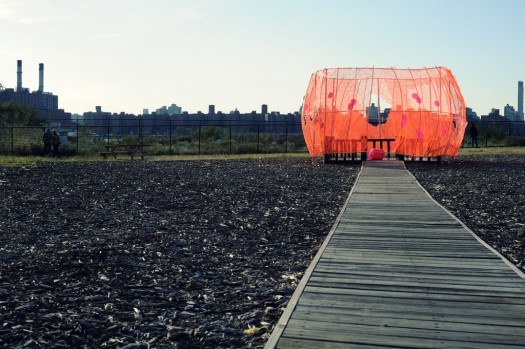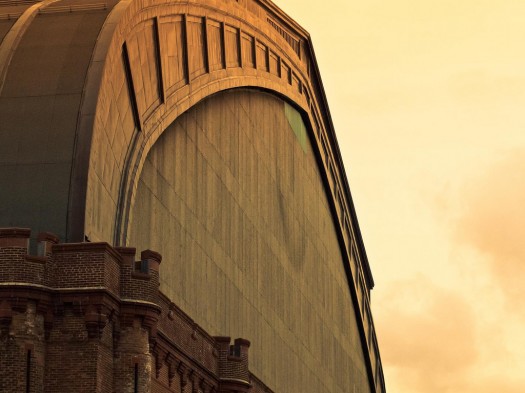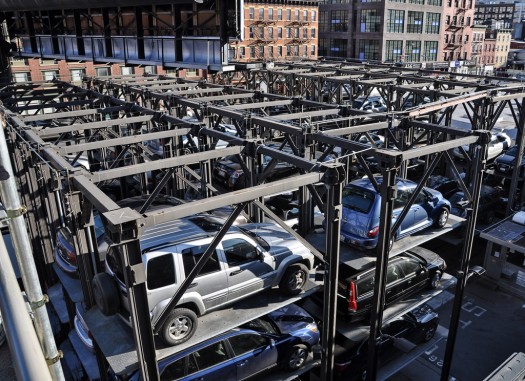
We are celebrating 15 years — and counting — of stories that are deeply researched and deeply felt, that build a historical record of what the city has been.
We are celebrating 15 years — and counting — of stories that are deeply researched and deeply felt, that build a historical record of what the city has been.
SUB SITE DYNAMITE
A routine underground detonation to create an elevator shaft for part of the Second Avenue subway construction went horribly wrong on Tuesday, when the blast misfired and sent chunks of debris flying, billowing thick black smoke eight stories tall. Thankfully, no injuries were reported at the site on the northwest corner of East 72nd Street and 2nd Avenue, due in large part to the MTA fencing off the area as part of a controlled explosion process. Six windows were damaged in the blast, as well as portions of the sidewalk. The MTA has halted further construction at the site until a thorough investigation is carried out. Local politicians like Assemblyman Micah Kellner have already spoken out against the agency’s handling of the matter, calling the incident “another example of the M.T.A.’s lack of willingness to have oversight or hold their contractors accountable.” Check out dramatic photos of the explosion here.

Hudson River Park Esplanade | Image by flickr user criana
WOES AND MEANS
The enormous transformation of New York City’s parks over the past decade hasn’t been cheap. Their long-term maintenance poses an even costlier financial responsibility, made only more complex by the public-private partnership model favored in the Bloomberg era. Following in the footsteps (or languishing in the shadow) of recent income-generating powerhouses like the High Line, the Hudson River Park Trust approached the state legislature this year to adapt their charter, to allow for more developments and greater revenue sources. And Friends of Hudson River Park has sought to establish a Neighborhood Improvement District in order to “tax” businesses and residences in the area to offset the park’s maintenance costs. The financial woes continue for the park as the largest commercial operation on the site, Chelsea Piers, “is locked in legal battle with the State over maintenance and repair funding costing about $37.5 million.” Median strip maintenance is also an issue, as the City Department of Transportation wants the State Department of Transportation to complete work on Interstate 9A before the City will take over responsibility for the medians. Other options for funding are up in the air, such as a 15% fee charged to incoming cruise ships, but until issues of jurisdictional overlap are addressed, it seems the concerned parties will have to keep thinking creatively.

Transmitter Park | Image by flickr user Ralph Hockens
GREENPOINT GREENERY
The long-awaited Transmitter Park is set to open this weekend at the river’s edge between Kent and Water streets, “marking the first green space in North Brooklyn since the city promised to build broad expanses of parkland in exchange for permitting luxury housing along the waterfront seven years ago.” Residents are clamoring for access to the 1.6 acres of open space, which is located at a former WNYC radio tower and a ferry dock, and “boasts a 300-foot pier, a waterfront esplanade, a grassy lawn and a water feature for kids.” The Brooklyn Paper reports that while residents are looking forward to using the new space, community activists are expressing concern about the length of time it took to complete the relatively small park, and point out it could foreshadow complications and delays with planned projects such as the Bushwick Inlet Park and the unused lot at 65 Commercial Street.

Rear of Kingsbridge Armory | Image by flickr user Riveredger
A COOL RINK OF WATER
In 2009, redevelopment of the Kingsbridge Armory into a mall was stymied by local demands for a living wage for retail employees. When the City Council voted down the partially publicly-subsidized proposal, supporters of the project claimed that canceling it would rob the Bronx of a rare opportunity for large-scale private investment and jobs and would prevent the building’s productive use for years to come. But now the community and the City have two competing plans to consider. The Wall Street Journal characterizes them as “a Chelsea Market-style complex with shopping, food stalls and offices versus a celebrity-backed hockey arena drawing people to the city’s poorest borough.” This week, several prominent members of the Bronx political establishment, led by Borough President Ruben Diaz, have come out in favor of the ice skating proposal. Their reasoning is twofold. Young Woo, developer of downtown Brooklyn’s shipping-container-chic Dekalb Market, would only commit to the $10-per-hour wage for those his company directly employed, while the ice arena “promises to pay all workers a ‘living wage.'” Secondly, some officials worry that remaking the Bronx neighborhood in Brooklyn’s image has limited appeal and will lead to insulated success. Stay tuned for more on this story in the months ahead.

Parking at the High Line | Image by flickr user Eric.Parker
LOTS OF LOTS
A new report out this week from Columbia University’s Center for Urban Real Estate argues that parking lots are the key to utilizing existing space for high-density developments in the future. The study, which was commissioned by parking-garage and storage operator Edison Properties, found that “developments whose land once included parking lots tended to have greater rates of building density, ranging from 16% more square feet in lower Manhattan to 46% more square feet in midtown.” It also found that, between 1996 and 2012, 20% of redeveloped land south of 59th Street in Manhattan and in Downtown Brooklyn, “had previously been parking lots.” The report suggests, counter-intuitively, that the city should promote land assembly districts and new parking allowances, in order to enable developers to acquire “soft sites” adjacent to new projects that might allow for denser, more sustainable development in the future. Crain’s reports that other real estate and urban policy experts, such as Vicki Been of the Furman Center, are unconvinced by this argument.
SEWARD FORWARD
This Wednesday, after almost 50 years of failed proposals and missed opportunities, the City Planning Commission voted unanimously in favor of the new mixed-use development plan for the Lower East Side’s Seward Park. Tenements that once stood on the site were demolished in the 1960s, and since then there has been an often intense debate between city officials and various resident groups about the amount of low-income housing in any future projects. Many residents initially wanted all of the apartments to be affordable housing, but a compromise has been reached in which just nearly half of the 900 apartments will be market-rate to provide funding. As Crain’s reports, new issues have emerged, however: “Community Board 3, which was instrumental in getting the latest plan through the city public review process, wants to remain actively involved in the redevelopment. Some in the community would like to see a school included in the project. Others want to make sure that a big-box retailer does not occupy the space.” If the Mayor and City Council approve the plan, a proposal bid for a developer could begin as early as next year.

Minerva statue at Battle Hill, Brooklyn | Image by flickr user jamescastle
BROOKLYN BELLIGERENCE
Lexington and Concord don’t have to get all the credit. August 27th marks the 236th anniversary of the Battle of Brooklyn, fought between George Washington’s troops and the British Army. It is notable as the first battle following the singing of the Declaration of Independence, and therefore the first fought by the newly-official United States military. In honor of the event, the Green-Wood Historic Fund is hosting a day of reenactments and trolley tours of the conflict site on what is now a part of Green-Wood cemetery. More information can be found on their website. Let’s just hope vandals don’t decide to crash the party again.
The Roundup keeps you up to date with topics we’ve featured and other things we think are worth knowing about.
The views expressed here are those of the authors only and do not reflect the position of The Architectural League of New York.